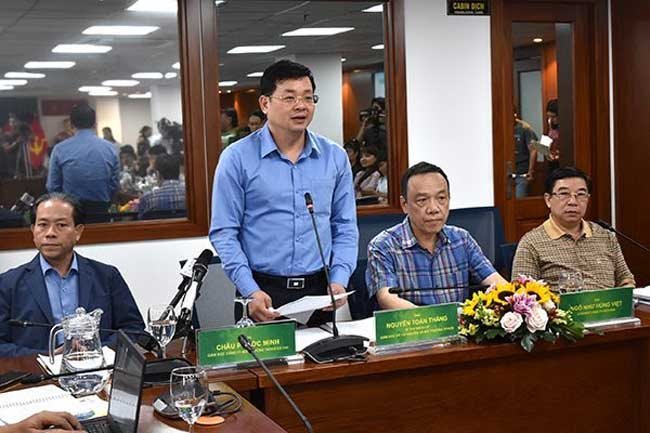 |
| Nguyen Toan Thang (standing), director of the HCMC Department of Natural Resources and Environment, speaks at a press briefing on August 26 on the progress of waste-to-energy plants in the city |
At a press briefing on the progress of waste-to-energy plants in the city, held by the municipal Department of Natural Resources and Environment today, August 26, Ngo Nhu Hung Viet, general director of Vietstar Environmental JSC, owner of the Vietstar waste-to-energy project, noted that the plant in Cu Chi District will use German automated technology.
In the first phase, the plant is expected to have a daily capacity of processing 2,000 tons of waste, which will double to 4,000 tons per day by 2021. The total investment for the two phases is estimated at nearly US$400 million.
Nguyen Toan Thang, director of the HCMC Department of Natural Resources and Environment, stated that HCMC discharged an average of 9,200 tons of waste daily last year, up 4.19% over 2017, and most of the waste was buried.
The city is expected to kick off two more waste-to-energy projects in September and October to reduce the proportion of buried waste to 50% by 2020 and 20% by 2025. HCMC authorities will issue preferential policies on land, electricity price, tax and capital for investors of waste-to-energy projects.
Work on parts of the Tam Sinh Nghia waste-to-energy project in Cu Chi District will begin in October, remarked Ngo Xuan Tiec, general director of Tam Sinh Nghia Investment-Development JSC.
Covering eight hectares of land, this plant will also use German technology to burn 2,000 tons of waste to produce 40 megawatts of electricity and 200 tons of unbaked bricks per day. The plant is expected to be put into operation in the last quarter of 2021. SGT
Le Anh
 As a first step in reducing the need to bury waste, construction of HCMC’s first waste-to-energy plant will begin on August 28, with its launch scheduled for the end of next year.
As a first step in reducing the need to bury waste, construction of HCMC’s first waste-to-energy plant will begin on August 28, with its launch scheduled for the end of next year.